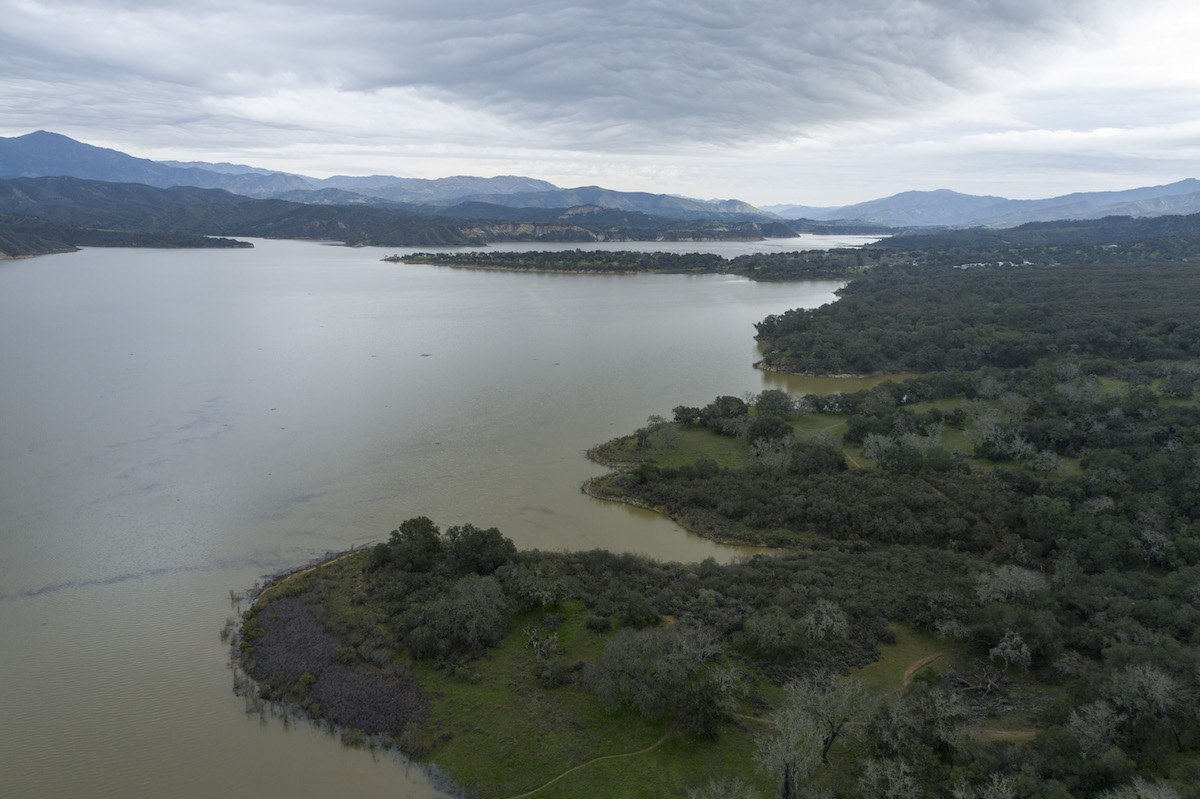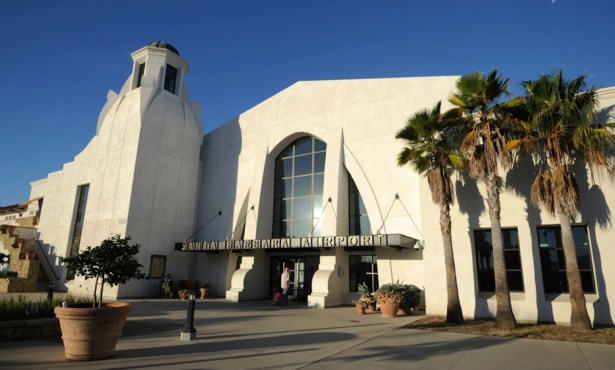Santa Barbara’s Three-Year Water Supply ‘Much Better’ Due to Recent Rains
City Officials Release Report on Water Supply Management Showing ‘Dramatic Improvement’ from 2022 to 2023

[Updated: Feb. 8, 2023, 3:15pm]
We may not be out of a drought just yet, but according to city officials, Santa Barbara’s water supply for at least the next three years is in a “much better” position to meet local demands due to the recent storms filling the reservoirs at Lake Cachuma and Gibraltar.
“The tides have really turned,” said Dakota Corey, the city’s new water supply and services manager, who presented the 2022 Water Supply Management Report to the City Council on Tuesday, alongside Water Resources Manager Joshua Haggmark.
While the report focused on the “water year” 2022 — which covers September 2021 to August 2022 — the biggest takeaways were the effects of the rains that came even more recently in January 2023, which improved drought conditions dramatically, Corey said, moving Santa Barbara County out of the “extreme drought” classification into the lowest classification of “abnormally dry.”
According to the report, rainfall meters recorded about 17 inches at Gibraltar, 13 inches at Lake Cachuma, and 13 inches in Santa Barbara during the 2022 water year — which was around 70 percent of the historical 50-year average of 28 inches per year.
But since October, in what is considered “water year 2023,” the city has already recorded more than 33 inches, which is more than 270 percent above the historic average.
“So it’s really just a story of completely different water years,” Corey said.
The city’s water usage has also been more efficient in recent years. Since 2012, Santa Barbara has led efforts to encourage the community to cut back on its water usage due to drought conditions, and last year, the city used about 1,200 acre-feet less than expected. The city’s water usage now is about the same as it was 50 years ago, Corey said, despite the population being twice the size.
And meeting those demands just got a lot easier due to the January rains, she said. Gibraltar Reservoir is currently full and spilling with more than 4,670 acre-feet of water; Lake Cachuma reservoir is at 99 percent full with more than 190,000 acre-feet of water and spilled for the first time in over a decade this Wednesday.
With the two reservoirs, the water treatment plants, state water projects, and several other tunnels and basins, Corey said, the city is in a good position to meet the needs of the community.
“Santa Barbara has one of the most diverse water supply portfolios in the state,” she said. “And what that does is that allows us to utilize different supplies when they are available and not be stuck if we only have one supply that we rely on and it goes dry.”
The two reservoirs alone accounted for more than 53 percent of the city’s water supply in 2022, and now that they are full, it is expected that they may provide even more in 2023. The city applied for full allocations next year from Lake Cachuma, which could mean almost double the supply with up to 8,277 acre-feet of water.
Even with the water levels restored for the time being, city officials are still operating with expectations of a drought returning in the future.
“Even with those assumptions, we have plenty of water,” Corey said.
The city is also prepared to provide water for thousands of new housing units that may be built over the next decade, which Corey said will likely be multi-family projects that are “largely very efficient” with water usage.
The report came as a welcome relief to city councilmembers, who commended the water management staff for staying prepared throughout the recent dry years and putting the city in a good position going forward.
“We’re always covering our bases and making sure that we’re planning for the future, and that takes such a concerted effort,” Councilmember Kristen Sneddon said.
Support the Santa Barbara Independent through a long-term or a single contribution.



